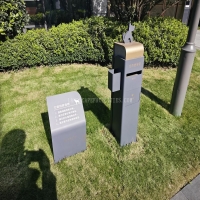Welcome to the website for landscape facilities products and knowledge.
How does the table’s design facilitate easy integration with smart contracts?
The integration between database tables and smart contracts represents a critical frontier in blockchain technology development. Modern table architectures employ sophisticated design principles that fundamentally transform how smart contracts interact with structured data. Through carefully engineered column structures and relationship mappings, these tables create natural bridges to blockchain environments.
One of the most significant design features involves standardized interface layers that translate between traditional database operations and blockchain transactions. These interfaces automatically convert SQL queries into blockchain-readable formats, allowing smart contracts to read and write table data without complex middleware. The table schema itself incorporates blockchain-specific fields, including wallet address mappings, transaction hash tracking, and block confirmation status indicators.
Modular table architecture further enhances integration capabilities. By separating core data storage from blockchain interaction layers, designers create flexible systems where smart contracts can access specific data modules without compromising overall database security. This modular approach enables granular permission settings, where different smart contracts might have varying levels of access to table data based on their verified identities and purposes.
The implementation of webhook triggers and event listeners within table designs creates responsive integration pathways. When specific data conditions are met within tables, automated triggers can initiate smart contract functions, enabling real-time blockchain interactions based on database events. This bidirectional communication channel ensures that table updates and contract executions remain synchronized across platforms.
Furthermore, advanced table designs incorporate interoperability features that accommodate multiple blockchain networks simultaneously. Through standardized API endpoints and normalized data formats, a single table structure can serve smart contracts operating on different blockchain protocols, from Ethereum to Solana and beyond. This cross-chain compatibility eliminates the need for duplicate table structures for each blockchain environment.
Error handling and transaction rollback mechanisms represent another crucial design consideration. Tables designed for smart contract integration include comprehensive logging systems that track integration attempts and automatically revert changes when blockchain transactions fail. This maintains data consistency across both traditional and blockchain environments, preventing the common issue of orphaned data updates.
The evolution of table design continues to focus on reducing the technical barriers to smart contract integration. Through intuitive data mapping tools, visual relationship builders, and pre-configured blockchain templates, modern database systems empower developers to establish robust connections between tables and smart contracts with minimal custom coding. This democratization of integration capabilities accelerates blockchain adoption across industries while maintaining the security and reliability expectations of enterprise database systems.
Related search:

Recommendation
Outdoor cat and dog feces trash can; Community pet trash can; Metal multi-color design